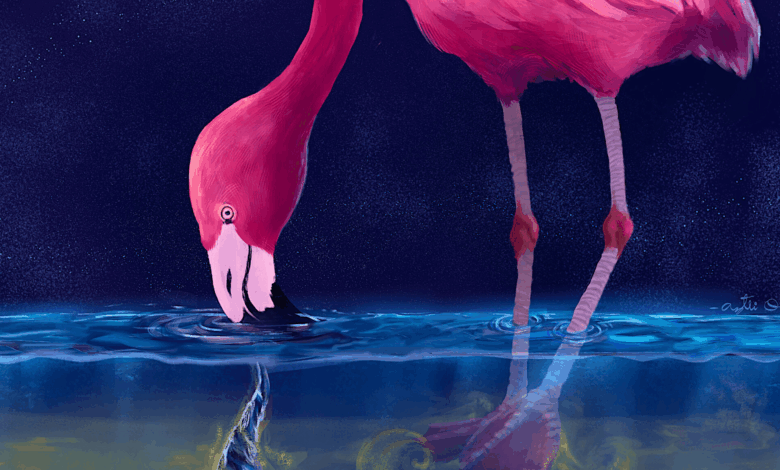Flamingos conjure ‘water tornadoes’ to trap their prey

Flamingos are known for their vibrant pink feathers and graceful appearance, but a recent study has revealed the fascinating feeding behavior of these elegant birds. Contrary to their calm demeanor, flamingos are skilled predators that use a unique technique to capture their prey.
The study, published in the journal Proceedings of the National Academy of Sciences (PNAS), sheds light on how flamingos create swirling water tornadoes to efficiently hunt for their food. Researchers from the University of California, Berkeley, Georgia Tech, Kennesaw State University, and the Nashville Zoo observed Chilean flamingos in captivity to understand their feeding habits.
Flamingos use a combination of their feet, heads, and beaks to create these water tornadoes, which help them concentrate their prey, such as brine shrimp, before consuming them. The birds’ specialized anatomy, including webbed feet and L-shaped bills, allows them to effectively trap and filter small aquatic organisms.
According to Victor Ortega Jiménez, a biologist and co-author of the study, flamingos are highly adapted for filter feeding. Their unique feeding strategy involves churning up sediment with their feet, creating mini water tornadoes to draw prey closer, and using their beaks to filter out food particles.
The researchers also found that the shape of flamingo beaks plays a crucial role in their feeding behavior. The flattened, angled front end of their beaks allows them to skim the water’s surface and create sheet-like vortices that trap prey. This specialized technique enables flamingos to capture agile animals like brine shrimp and copepods.
The study’s findings have implications beyond the animal kingdom, as the fluid principles observed in flamingos could inspire new engineering applications. By understanding how flamingos concentrate and capture food particles, engineers may develop more efficient systems for filtering water or cleaning up pollutants like microplastics.
Overall, the study provides valuable insights into the remarkable feeding behavior of flamingos and highlights the potential for biomimicry in engineering applications. By studying the natural world, researchers can uncover innovative solutions to complex challenges, inspired by the incredible adaptations of animals like the pink flamingo. Laura has always had a deep fascination with a wide range of scientific topics, from aquatic life to paleontology, nanotechnology, and the ways in which science influences daily life. Her curiosity knows no bounds when it comes to exploring the mysteries of the natural world and the cutting-edge developments in technology.
One of Laura’s greatest passions is the study of aquatic life. She is captivated by the diversity of marine species, from tiny plankton to massive whales, and the intricate ecosystems that support them. Whether she is diving into the depths of the ocean or simply observing a fish tank at home, Laura is constantly amazed by the beauty and complexity of life underwater.
In addition to her love of all things aquatic, Laura has a keen interest in paleontology. The study of ancient life forms and the history of our planet fascinates her, and she is always eager to learn more about the dinosaurs, prehistoric mammals, and other creatures that once roamed the Earth. By delving into the past, Laura gains a deeper understanding of the present and the forces that have shaped the world we live in today.
Nanotechnology is another area of science that intrigues Laura. The ability to manipulate and control matter at the molecular level opens up a world of possibilities, from new materials and medicines to advanced electronics and clean energy solutions. Laura is excited to see how nanotechnology will continue to revolutionize various industries and improve our quality of life in the future.
Finally, Laura is passionate about exploring the ways in which science influences daily life. Whether it’s the technology in our smartphones, the medications we take, or the food we eat, science plays a crucial role in shaping the world around us. By staying informed and engaged with the latest scientific developments, Laura is able to appreciate the impact that science has on society and make informed decisions in her own life.
Overall, Laura’s diverse interests in aquatic life, paleontology, nanotechnology, and the intersection of science with daily life reflect her insatiable curiosity and passion for knowledge. She is constantly seeking out new information and experiences to deepen her understanding of the natural world and the incredible advancements being made in the field of science.





